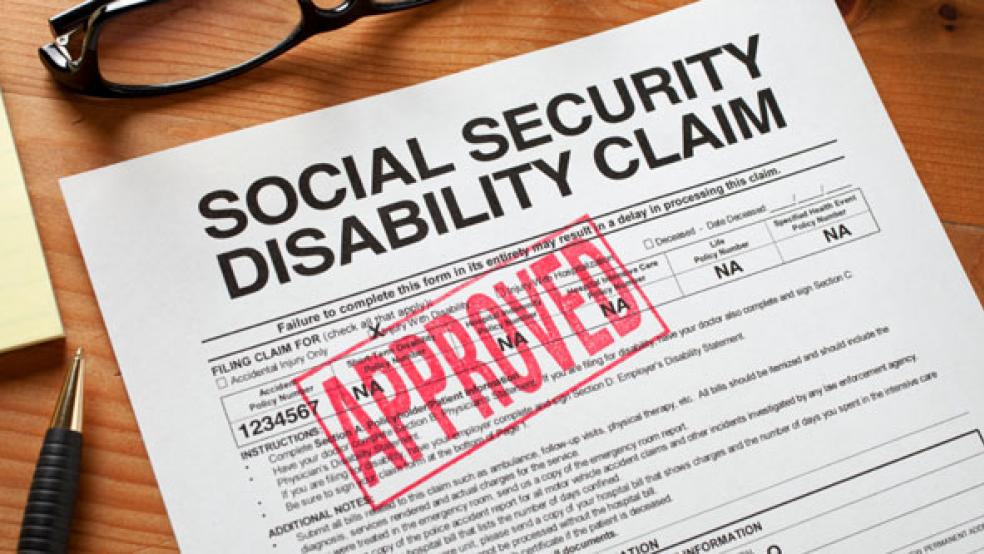The Social Security Disability Insurance program dodged a bullet late last year when Congress approved a temporary patch to keep the program from running low on cash.
With as many as 11 million Americans facing a 19 percent reduction in their disability insurance benefits, Congress and the White House agreed to shift funding from the much larger Social Security retirement account to keep the program going with full benefits through 2022.
Related: Harsh New Penalties for Social Security Fraud Are Coming
However, the long-term prognosis for the $150 billion annual disability insurance trust fund is cloudy for now. And before lawmakers agree to extend it again, there is likely to be a tough reexamination of the program to find ways to reduce costs, crack down on fraud and move more people off the roles and back to work.
“I think with any program like this there are always going to be challenges to it in terms of people questioning whether it should exist at all,” Jonathan Schwabish, a senior research associate with the Urban Institute and an expert on disability insurance, said in an interview Thursday. “On the other side there are people questioning whether it provides the support that people who are disabled need.”
The program was designed to assist the physically and mentally disabled and their families, although over the years it has been expanded to provide assistance to more people with physical problems, especially women. While the program frequently has come under criticism for being overly generous, benefits average $1,165 per month, or roughly $14,000 a year.
Both the Social Security retirement trust fund and the companion disability insurance program are on shaky financial ground in the long term and their funding will have to be addressed by Congress in the coming years to avert a crisis. The retirement fund itself is anticipated to run out of cash by 2035, according to a trustees’ report. And there may be increased pressure on the retirement program as a result of Congress shifting funds from it to the disability program.
Related: Audit Uncovers $124.7 B of Overpayments and Fraud in Medicare and Medicaid
However, in many ways, the disability insurance program will be much harder to fix, according to Schwabish, because of the wide range of disabilities that are covered and the types of judgments that are made to allow people into the program or to remove them. Congress ordered a number of pilot projects to experiment with ways to wean more beneficiaries off the program, but past efforts at this have been generally unsuccessful.
The percentage of disabled workers as a share of all workers has more than tripled since 1970, according to Schwabish. The disability insurance program provided benefits to nearly 9 million disabled workers in 2013, nearly six times the 1.5 million disabled workers who received benefits in 1970.
Schwabish and the Urban Institute this week published an important primer on the disability insurance program, including how it operates and who it benefits. Here are some of the highlights:
- The share of workers receiving disability has more than tripled from 1.6 percent in 1970 to 5.5 percent in 2013. There are many reasons for this increase, including the rapid aging of the population, declining employment prospects during the recession and new, more liberal eligibility criteria.
- The state-by-state distribution of people receiving disability insurance varies greatly. For instance, Maine and New Hampshire have the highest rates of mental illness in the country. Southern states like Mississippi, Alabama and West Virginia have the highest rates of circulatory disease.
- Southerners are most likely to receive disability benefits. West Virginia had the highest rate of residents receiving disability in 2014 at 8.9 percent. That was followed by Alabama at 8.5 percent, Arkansas and Kentucky both at 8.4 percent, and Mississippi at 7.9 percent.
- Musculoskeletal disorders are among the most common problem. People receiving disability for disorders of the muscles, nerves, tendons, joints, cartilage, neck and lower back increased by an extraordinary 65 percent between 1996 and 2014.
- The number of people joining the program each year per 1,000 people has remained relatively flat since 1991. The “incident rate” of being placed in the program has ranged overall between 4.7 and 6.4 per 1,000 disability-insured Americans, depending on the state of the economy.
- More than half of women and a third of men receive DI benefits below $1,000 per month. As women’s rates of labor-force participation and earnings approach those of men, women’s DI benefits should begin to approach those of men.
- DI benefits disproportionately go to low-income people. In 2010, slightly less than half of DI beneficiaries ages 31 to 49 fell into the bottom income quintile.
- Few people leave DI. Once disabled people have been accepted into the program, they rarely leave it unless they retire and begin drawing Social Security retirement benefits or they die. The number of people who are removed from DI per 1,000 existing beneficiaries went from 174 in 1970 to just 76 in 2003. Since then, the number of beneficiaries per 1,000 removed every year rose slightly, to 87.





